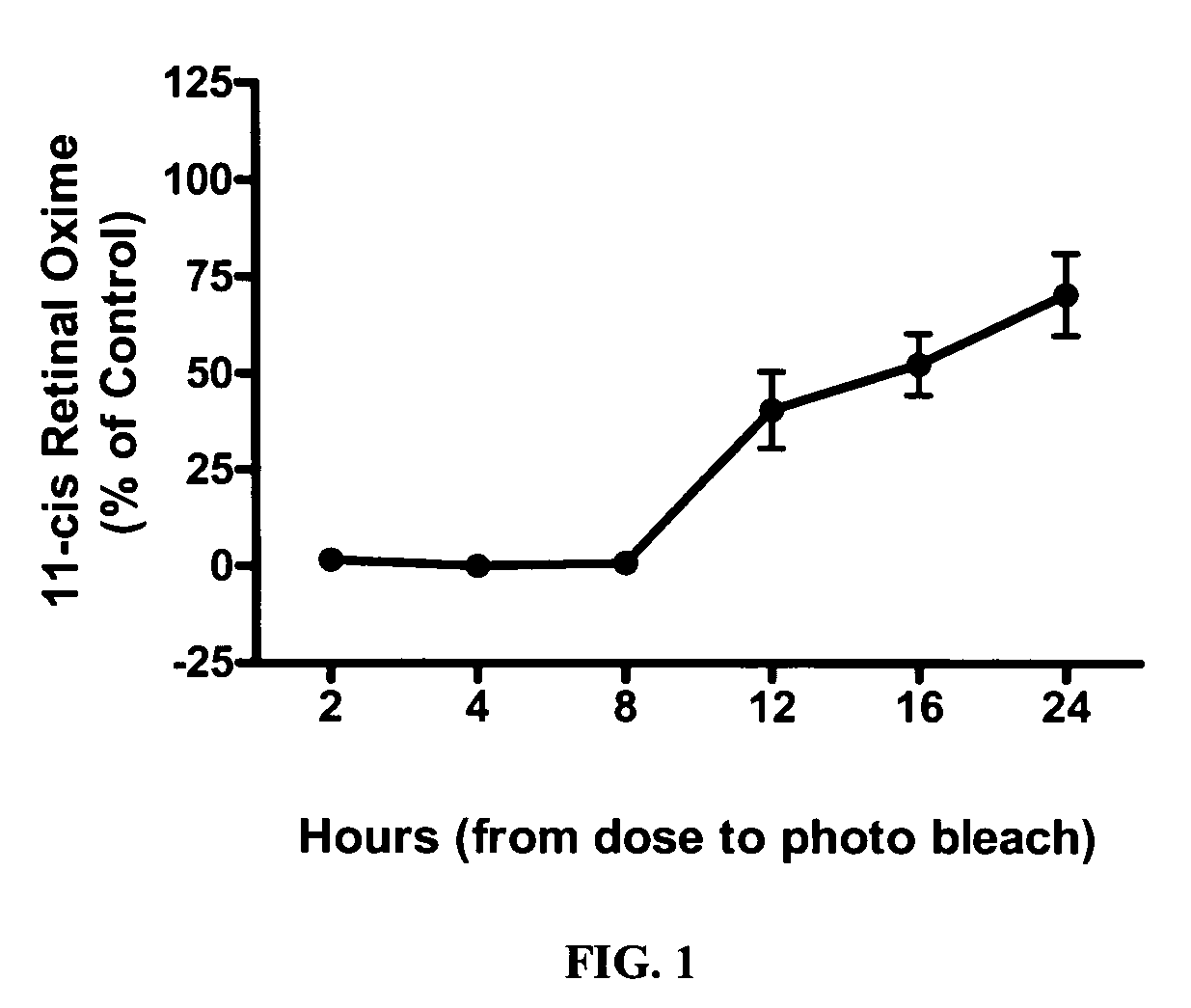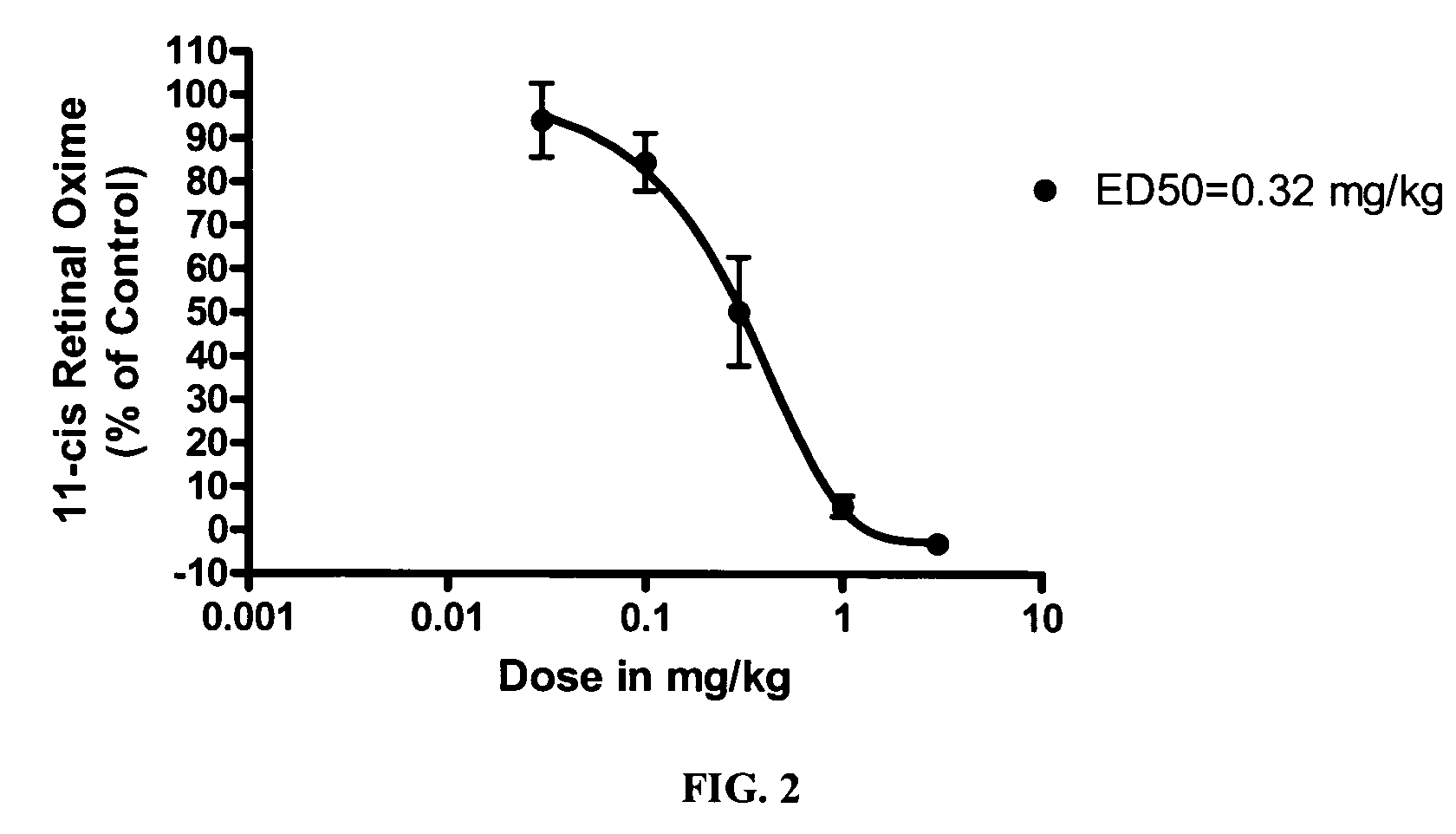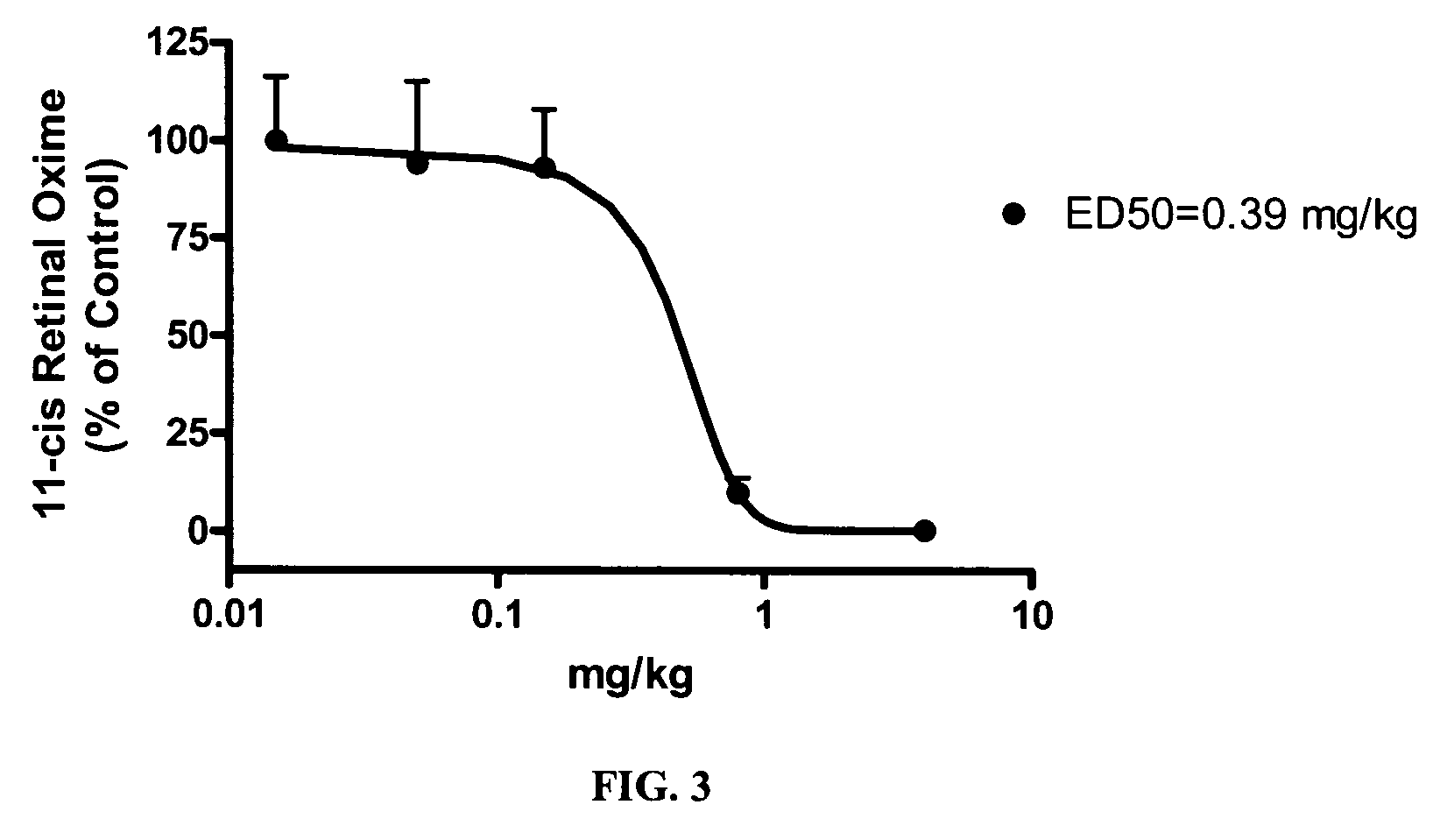Alkoxy compounds for disease treatment
a technology of alkoxy compounds and disease, applied in the direction of biocide, cardiovascular disorders, drug compositions, etc., can solve the problems of “blind” areas in the central vision, severe damage to the overlying retina, and no effective treatment is yet available, so as to reduce the ischemia in the eye
- Summary
- Abstract
- Description
- Claims
- Application Information
AI Technical Summary
Benefits of technology
Problems solved by technology
Method used
Image
Examples
example 1
Preparation of 3-(3-(cyclohexylmethoxy)phenyl)propan-1-amine
[0784]
[0785]3-(3-(Cyclohexylmethoxy)phenyl)propan-1-amine was prepared following the method shown in Scheme 1:
[0786]
[0787]Step 1: A mixture of 3-iodophenol (1) (1.1 g; 5 mmol), bromide 2 (2.1 mL, 15 mmol) and potassium carbonate (2.07 g, 15 mmol) in acetone (20 mL) was heated under reflux overnight. The mixture was cooled to room temperature and then concentrated under reduced pressure. The mixture was partitioned between EtOAc and water and the organic layer was washed with 10% aquoues sodium hydroxide, then brine, dried over MgSO4 and concentrated under reduced pressure. Purification by flash chromatography (0 to 30% EtOAc-hexanes gradient) gave ether 3 as a clear oil. Yield (1.08 g, 68%): 1H NMR (400 MHz, DMSO-d6) δ 7.13-7.26 (m, 2H), 7.03 (t, J=8.0 Hz, 1H), 6.92 (dq, J=8.4, 2.4 Hz, 1H), 3.74 (d, J=6.4 Hz, 2H), 1.60-1.77 (m, 6H), 0.95-1.28 (m, 5H).
[0788]Step 2: Preparation of acetylene 4: To an ice cold mixture of propar...
example 2
Preparation of 3-(3-(2-propylpentyloxy)phenyl)propan-1-amine
[0792]
[0793]3-(3-(2-Propylpentyloxy)phenyl)propan-1-amine was prepared following the method shown in Scheme 2:
[0794]
[0795]Step 1: To a solution of phenol 1 (0.66 g, 3 mmol), alcohol 7 (0.49 mL, 3.1 mmol, and PPh3 (0.865 g, 3.3 mmol) in THF (7 mL) under argon was added diethyl azodicarboxylate (0.44 mL, 3.3 mmol) dropwise with rapid stirring. The mixture was stirred at room temperature for 2.5 h. The mixture was concentrated. Purification by flash chromatography (5 to 50% EtOAc-hexanes gradient) gave ether 8 as a clear oil. Yield (0.995 g, quant): 1H NMR (400 MHz, DMSO-d6) δ 7.24-7.26 (m, 2H), 7.01-7.06 (m, 1H), 6.91-6.94 (m, 1H), 3.81 (d, J=6.0 Hz, 2H), 1.70-1.73 (m, 1H), 1.25-1.38 (m, 8H), 0.84-0.87 (m, 6H).
[0796]Step 2: Coupling of ether 8 with acetylene 4 following the method described in Example 1 gave phthalimide 9 as a light yellow solid. Yield (0.77 g, 69%): 1H NMR (400 MHz, DMSO-d6) δ 7.85-7.93 (m, 4H), 7.20-7.24 (m...
example 3
Preparation of 3-(3-(2-ethylbutoxy)phenyl)propan-1-amine
[0799]
[0800]3-(3-(2-Ethylbutoxy)phenyl)propan-1-amine was prepared following the method used in Example 1.
[0801]Step 1: Alkylation of phenol 1 with 1-bromo-2-ethylbutane gave 1-(2-ethylbutoxy)-3-iodobenzene as a clear oil. Yield (1.29 g, 85%): 1H NMR (400 MHz, DMSO-d6) δ 7.24-7.28 (m, 2H), 7.04 (t, J=8.0, 1H), 6.94 (dq, J=8.0, 0.8, 1H), 3.83 (d, J=5.6, 2H), 1.55-1.59 (m, 1H), 1.28-1.44 (m, 4H), 0.86 (t, J=7.2, 6H).*
[0802]Step 2: Coupling of 1-(2-ethylbutoxy)-3-iodobenzene with acetylene 4 gave 2434342-ethylbutoxy)phenyl)prop-2-ynyl)isoindoline-1,3-dione as a light orange solid. Yield (0.80 g, 53%): 1H NMR (400 MHz, DMSO-d6) δ 7.85-7.93 (m, 4H), 7.22 (dd, J=9.2, 7.6 Hz, 1H), 6.92-6.96 (m, 3H), 4.60 (s, 2H), 3.81 (d, J=6.0 Hz, 2H), 1.53-1.59 (m, 1H), 1.30-1.43 (m, 4H), 0.85 (t, J=7.2 Hz, 6H).
[0803]Step 3: Deprotection of 2-(3-(3-(2-ethylbutoxy)phenyl)prop-2-ynyl)isoindoline-1,3-dione with hydrazine gave 3-(3-(2-ethylbutoxy)phenyl...
PUM
 Login to View More
Login to View More Abstract
Description
Claims
Application Information
 Login to View More
Login to View More - R&D
- Intellectual Property
- Life Sciences
- Materials
- Tech Scout
- Unparalleled Data Quality
- Higher Quality Content
- 60% Fewer Hallucinations
Browse by: Latest US Patents, China's latest patents, Technical Efficacy Thesaurus, Application Domain, Technology Topic, Popular Technical Reports.
© 2025 PatSnap. All rights reserved.Legal|Privacy policy|Modern Slavery Act Transparency Statement|Sitemap|About US| Contact US: help@patsnap.com



